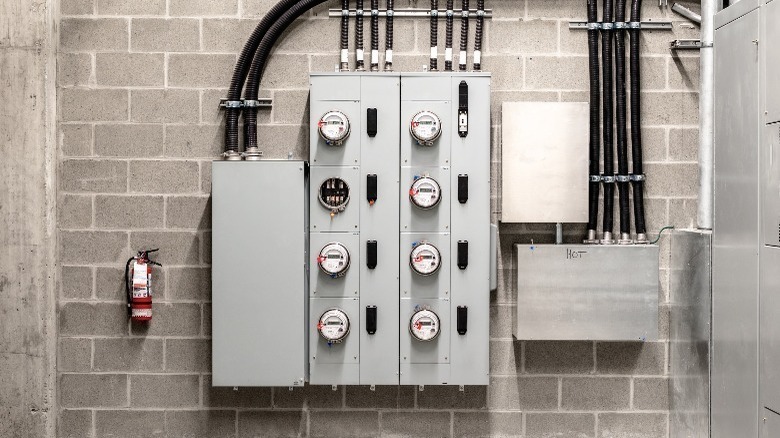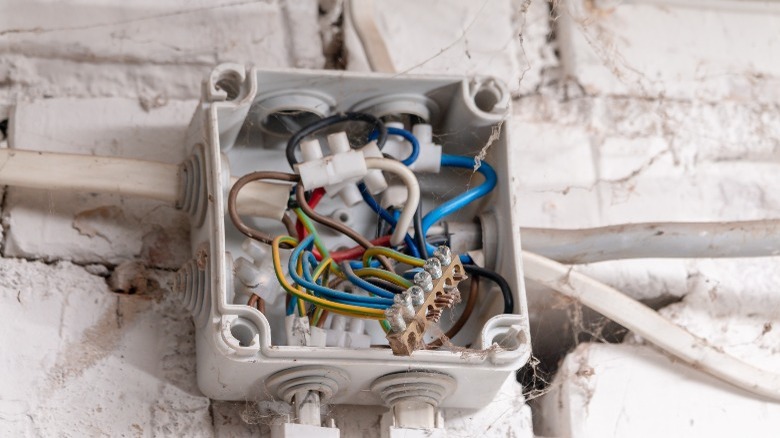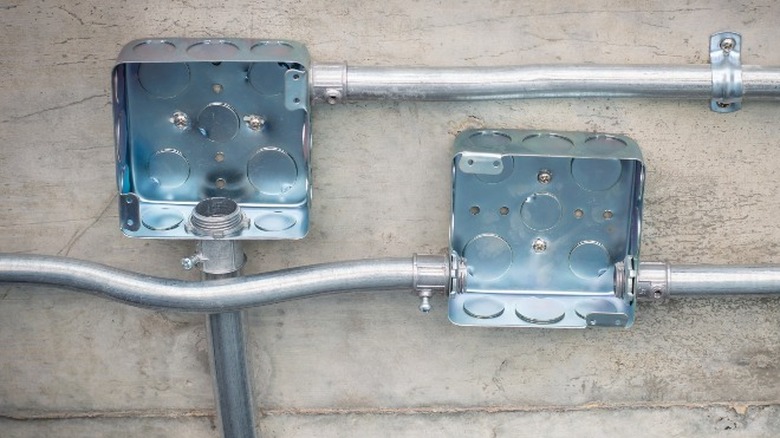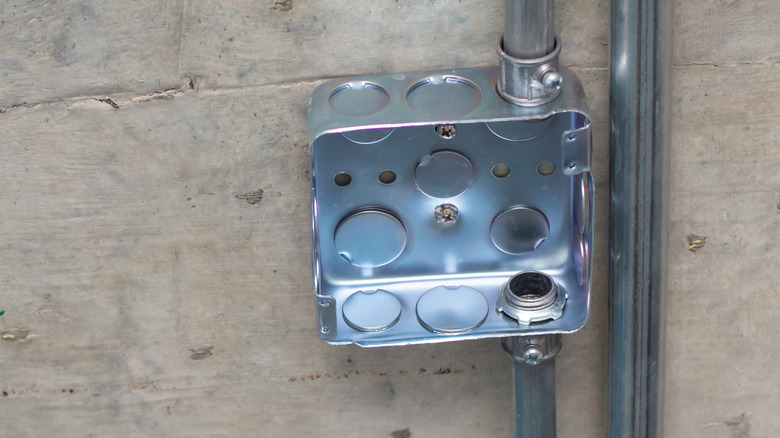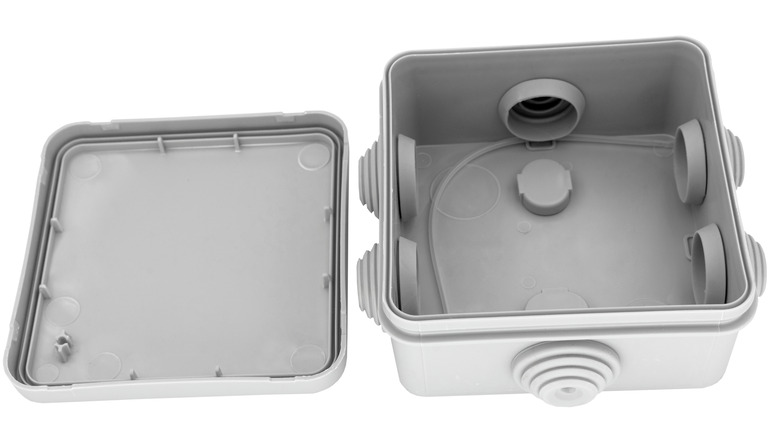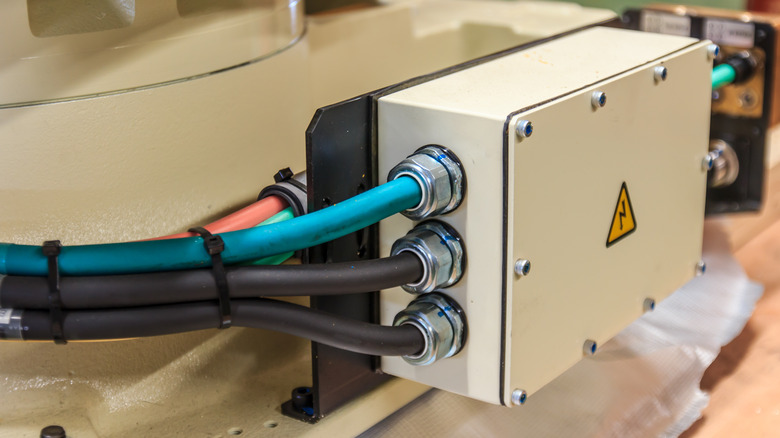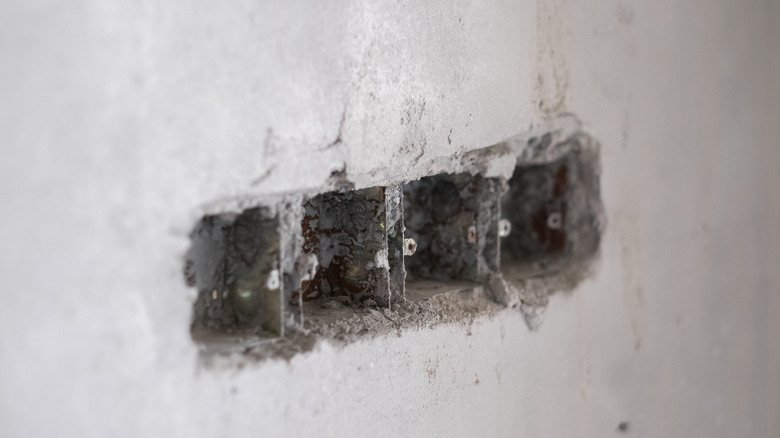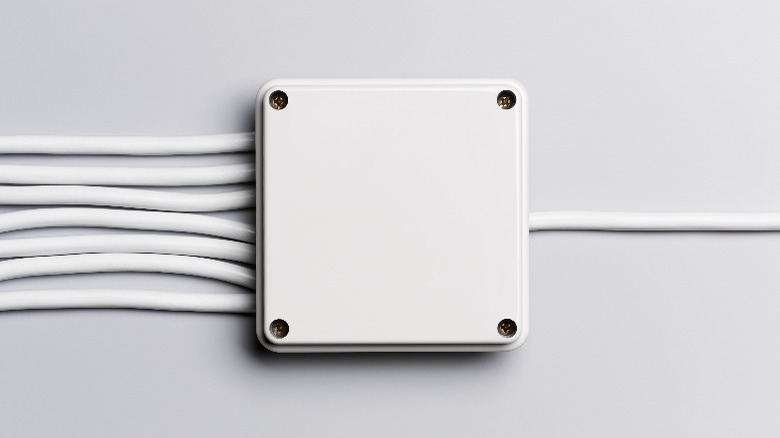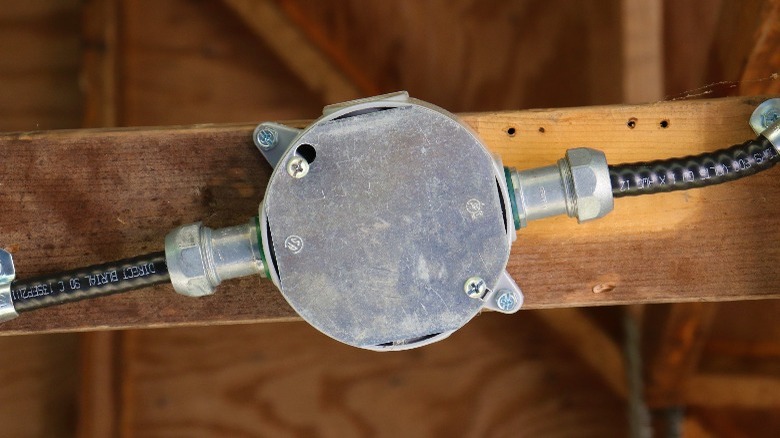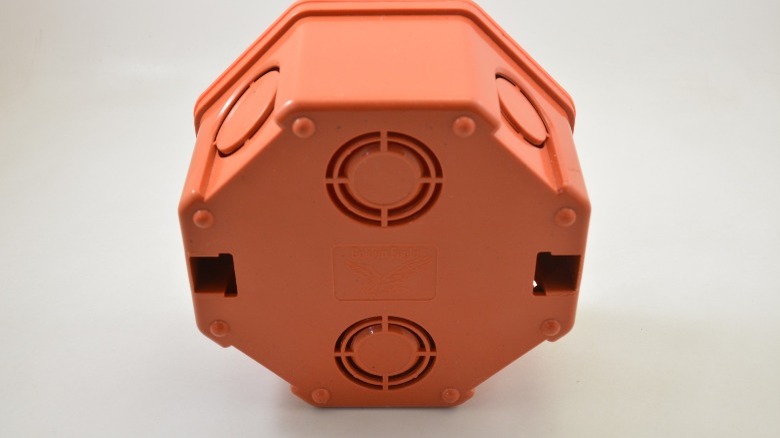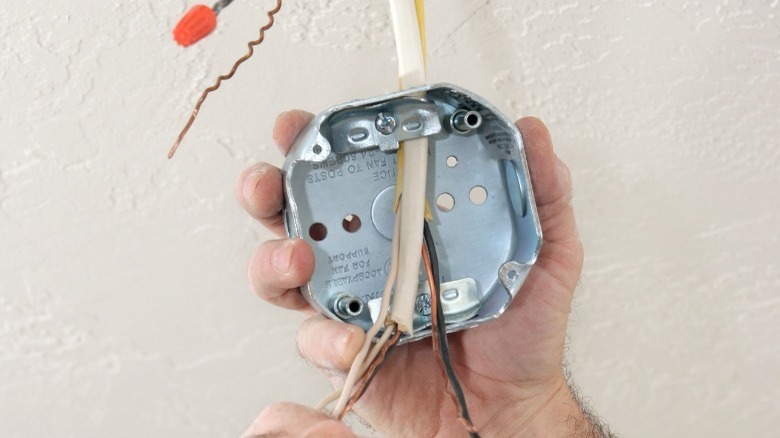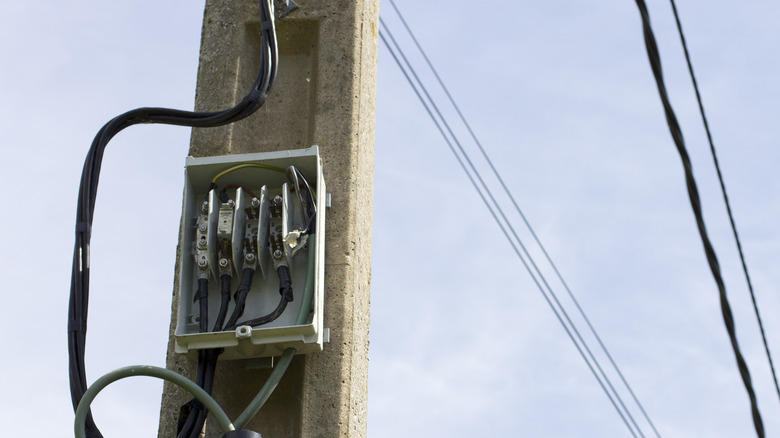11 Types Of Junction Boxes To Look For In Your Home
If there is one thing that's true, it's that all homes vary from one to the next. No two are exactly the same, from the type of home to the space's decor. However, each residence still has a lot in common with another. Among the many similarities, most typically, they have a kitchen, restroom, and a bedroom to sleep in. But another correlation not many talks about is junction boxes. So let's start with the basics. What even is a junction box, and how does one work?
The Spruce explains that a junction box — also called an electric box — is where two or more electrical wire connections meet into one behind a plastic or metal protective container. This junction box is a necessity in a home to protect against shortages in wires that can sometimes cause fires, amongst many other things. Every property has either a few or several in some place or another. Of course, there is a wide variety of junction box options, like with most things.
Plastic junction boxes
For the most part, all junction boxes come in two material types, and one of those materials is plastic. Because it's the cheapest option, most homeowners typically prefer plastic junction boxes. Another reason why plastic junction boxes are popular is due to the fact they don't need to be grounded, Home Addition Plus notes; this also makes it easier and quicker for electricians to replace them. Furthermore, the plastic junction box was invented in the 1900s, making it still a relatively new concept.
Metal junction boxes
The other type of material that's popular among homeowners is metal. Metal junction boxes are most commonly known for their durability and resistance. However, unlike plastic junction boxes, these boxes must be grounded to be properly used, thus, also making them more expensive to buy and have installed. NJ Electric Service also notes certain circumstances when these box types are the best choice, like when the wires they need to cover are made of a metal sheath or conduit.
Standard junction boxes
Of course, the most common type of junction box is the standard junction box. This is more than likely for all the simple uses in a home, such as light switches and outlets. The Spruce notes that these units are also known as either one-gang or single-gang junction boxes. For the most part, standard junction boxes are 2 inches wide and 3 inches tall. One of the most popular aspects of the standard junction boxes is that they can be linked to form bigger boxes.
Two-gang junction boxes
As Home Depot states, two-gang junction boxes or double-gang boxes are typically for dual uses, such as a light switch and outlet combination. Like many others, this type of box can come in many shapes and sizes; however, they usually come in a square form. These can be used for dual combinations such as a ceiling fan and light; however, an actual ceiling fan junction box is highly recommended.
Three-gang junction boxes
Less used yet still important is the three-gang junction box. Like the two-gang junction box, a three-gang box simply holds one more device than the double-gang unit. Still, this box type is less common because most devices are used by themselves or in even pairs. Manufacturers make these for easy convenience; however, professionals can create one by combining a one-gang junction box with a two-gang junction box. Angi notes that typically, you can find these junction units in old-work or new-work styles.
Four-gang junction boxes
You can also install four-gang junction boxes to protect your electrical wires. While it is possible, it is highly recommended not to go above this nor combine any other junction boxes to form a higher number of junction boxes. Doing so can cause shortages and the risk of fires. For multi-device used junction boxes, The Spruce notes that some may come in with built-in cable clamps. This is convenient in terms of organization and can prevent any device from being cross-threaded.
4-inch square junction boxes
A 4-inch square junction box is exactly what it sounds like: It's 4 inches in size all the way around. These junction box types are primarily used for conductors that are split in two or more directions, per Polycase. Similar to a standard junction box, a 4-inch square junction box is typically best for standard light switches and outlets. Square electrical units work well as junction boxes because they have plenty of room to cover wire splices and other small components.
Round pan junction boxes
Round pan junctions have the common nickname of "pancake boxes." This specific type of unit is best for ceiling fans, lights, or other mounted devices. They're extremely shallow at less than an inch deep. While easy to use, Angi notes that these are not ideal for any item or device weighing over 50 pounds. Furthermore, there can be no more than three devices connected to these junction boxes. Adding more can cause a risk of shortage and potential fire.
Octagon/round junction boxes
Much like their name, octagon and round junction boxes are either octagon or round in shape. While very similar to round pan junction boxes, these devices can be up to around 3 inches deep. According to Angi, round junction boxes also have a special feature called fasteners, which allows the box to be installed without requiring the contractor to cut any holes in the surface. It can simply be attached to the surface where the wires are being installed.
Ceiling fan junction boxes
While you can easily use a round pan junction box for a ceiling fan, they actually have their own junction box. Simply called ceiling fan junction boxes, they are typically either round or octagon, according to Hunter. Unlike round pan junction boxes, ceiling fan junction boxes are more durable and can hold much more weight. These devices need to be mounted onto something sturdy such as a ceiling brace or joist.
Outdoor junction boxes
The biggest and perhaps most important of all is the outdoor junction box. These can be found almost anywhere outdoors, and most properties have more than one. Almost all outdoor junction boxes are weatherproof and extremely durable. Polycase notes that these come in many different shapes, sizes, and even designs. Conveniently, there are also options to have them mounted to either poles or walls. They're also not expressly subject to the outdoors and can also be used inside, although this isn't as common.

